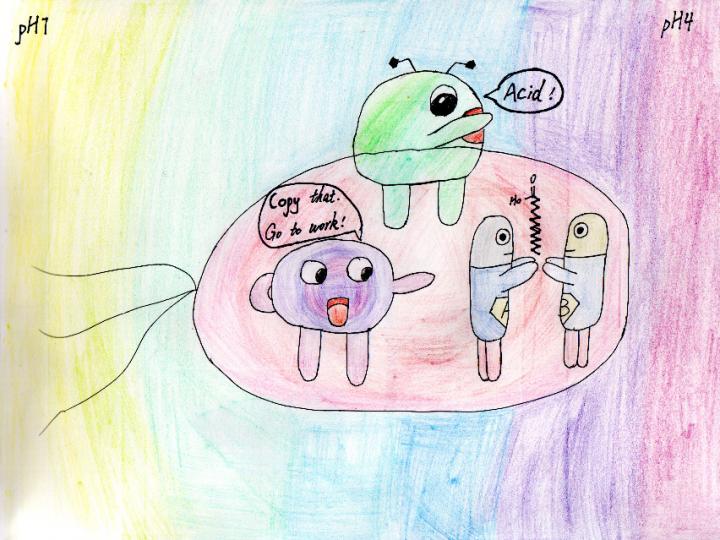
Credit: ZHAO Mohan
Growth ability at acidic conditions is important to bacteria. Enteric bacteria such as Escherichia coli and Salmonella can colonize and cause disease in the host’s intestinal tract, but they have to combat acidic environments during the whole process of invading the host.
The stomach, with pH value as low as 1.5-2.5, is recognized as a natural antibiotic barrier. After entering into the small intestine, E. coli will encounter a less acidic environment (with pH value of 4-6), reproduce rapidly, and cause disease to the host ultimately.
Recently, a research team led by Prof. XIAN Mo and Prof. ZHAO Guang from the Qingdao Institute of Bioenergy and Bioprocess Technology (QIBEBT) of the Chinese Academy of Sciences (CAS) discovered a novel bacterial acid tolerance system, which confers the growth capability to E. coli at pH of 4.2.
Up to now, five acid resistance systems have been reported. These acid resistance systems can enable E. coli to survive in gastric acid for hours, but they play no role in rapid multiplication of E. coli under moderate acidic conditions.
CpxA, the newly discovered system, can sense acidification directly through protonation of histidine residues. It will also activate its cognate regulator protein CpxRx to stimulate the expression of fabA and fabB genes for biosynthesis of unsaturated fatty acids, increasing unsaturated fatty acid contents in membrane lipid.
Changes in membrane lipid composition lower the fluidity and proton permeability of cell membrane, increasing the intracellular pH homeostasis.
Experiment results showed that E. coli mutant deficient in this system cannot grow in mouse intestine. Besides E. coli, this acid tolerance system also exists in pathogenic bacteria including Salmonella, Shigella, Vibrio cholerae, Yersinia pestis and Pseudomonas aeruginosa, which may be a new target for the development of antimicrobials.
The related findings were published in Nature Communications on Mar. 20.
###
This work was supported by the National Natural Science Foundation of China and the Natural Science Foundation of Shandong Province.
Media Contact
CHENG Jing
[email protected]
Related Journal Article
http://dx.




